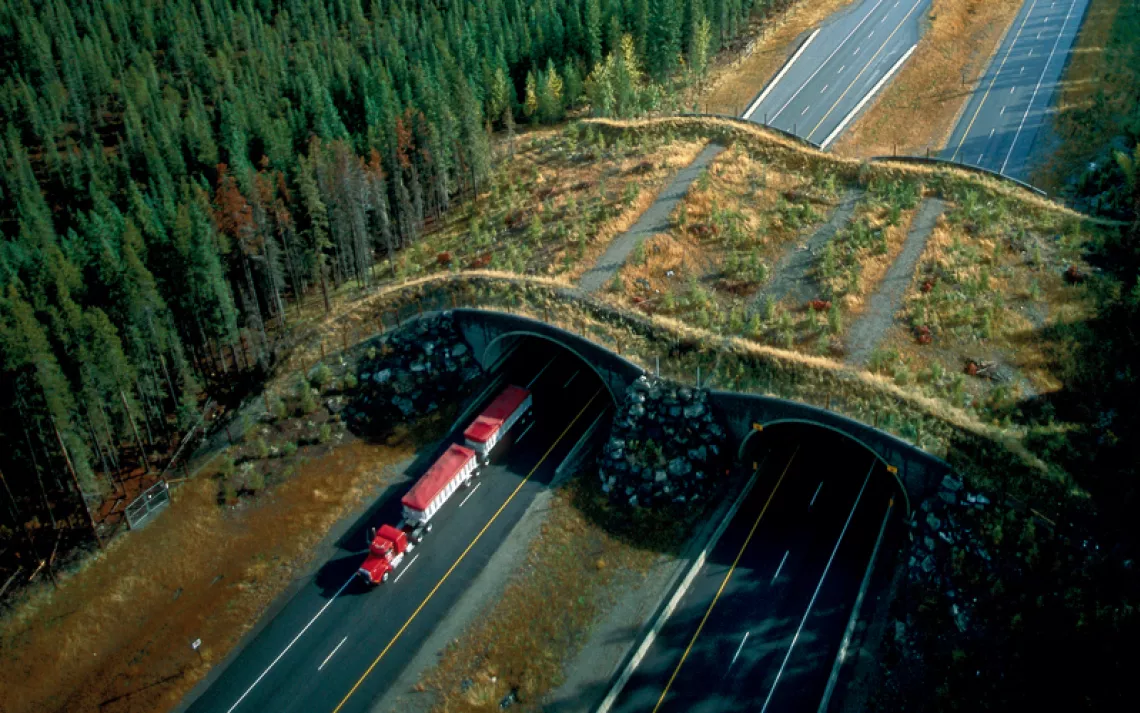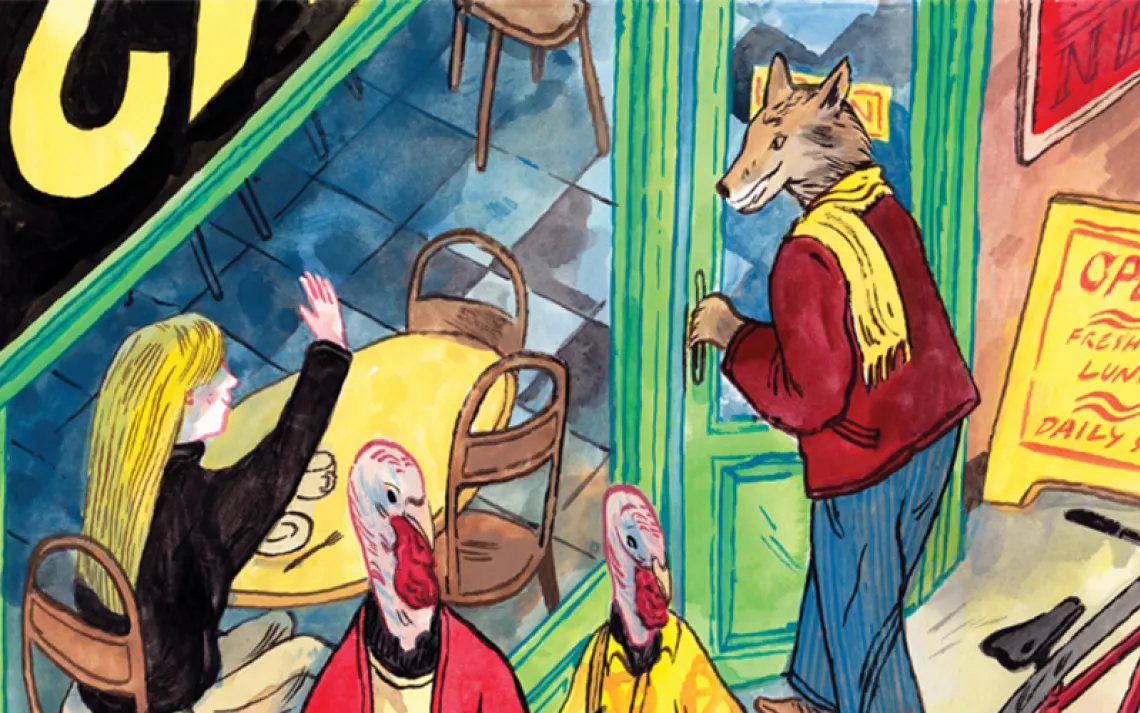In the Botswana bush, Wilderness Safaris Combines High-End Tourism with Public Education to Save Threatened Rhinos
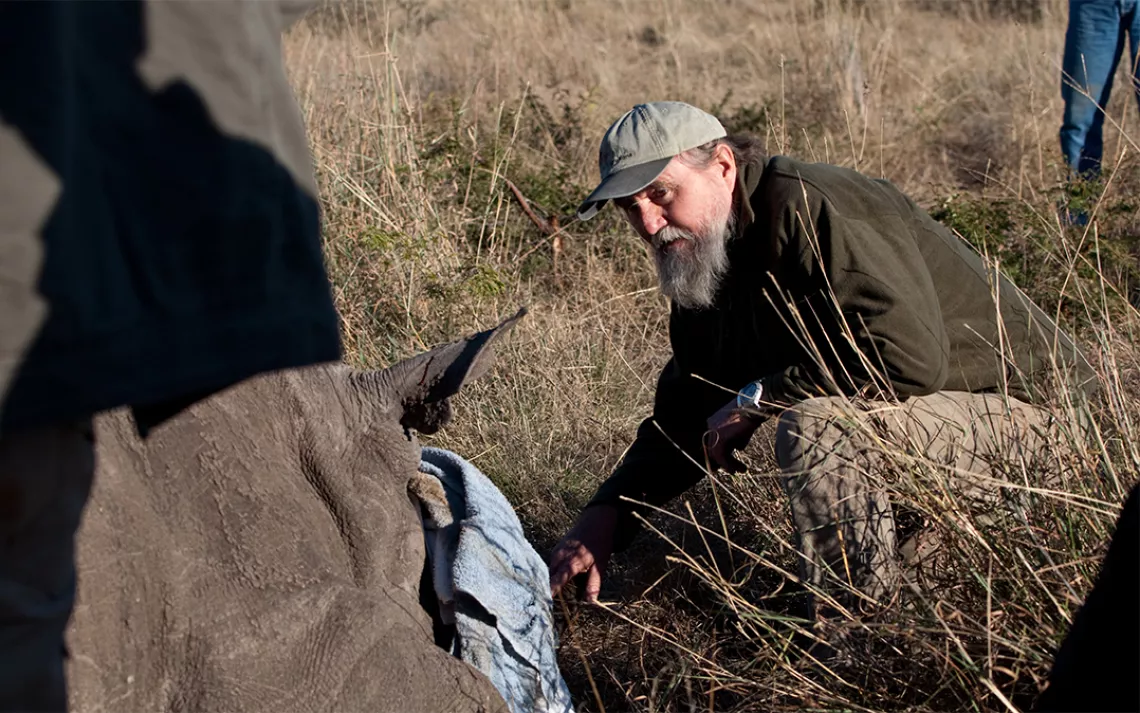
Photo courtesy of Wilderness Safaris
My school days were probably much like yours. The teacher stood at the head of the class in front of a scratchy blackboard while we children fidgeted at wooden flip-top desks that were stained with the graffiti of three or four generations of bored kids. Occasionally the classroom pet, a hamster, would emerge from its near-eternal state of sleep and give us a flash of life as it looped around in its wheel. My school lessons were never interrupted by a full-grown male African elephant banging on the window. But such an event is blasé at the Children in the Wilderness “school” in Botswana, where I had the chance to spend a few days earlier this year.
The school is located at Jao Camp, an upmarket safari lodge that had been transformed into temporary school for an excited bunch of children. The camp is situated in northern Botswana’s half-sunburnt, half-waterlogged Okavango Delta—a wildlife-rich delta that is the largest swamp in Africa and a miracle of clear water and foliage in a land of searing desert. The delta and surrounding regions are home to some of the greatest concentrations of wildlife left in Africa. Elephants in particular thump and crash through the swamps in numbers found nowhere else on the continent; there are an estimated 130,000 elephants in northern Botswana, which amounts to about a third of all the elephants in Africa. With a forward-looking, conservation-friendly government and a population that’s largely supportive of wildlife preservation, Botswana is a glowing illustration of what could be in a continent that, by and large, is losing its wildlife heritage at an alarming rate.
This school in the bush is part of an initiative called Children in the Wilderness, a nonprofit organization supported by Wilderness Safaris, one of the most well-respected outfitters in the region. The Children in the Wilderness project consists of numerous children's eco-clubs scattered across a half dozen southern African nations. These clubs, which are normally based out of local schools, are aimed at the rural communities that border the national parks and other protected zones where Wilderness Safaris operates its camps. The idea behind the eco-clubs is to build a generation of children who are environmentally aware, understand the imperative for ecological sustainability, and who appreciate the wildlife and wild spaces on their doorsteps. The program also gives them a path into the safari and conservation industry.
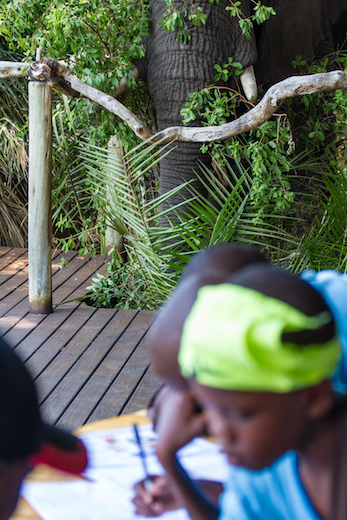
Photo by Stuart Butler
In addition to the eco-clubs, Children in the Wilderness also runs annual Children in the Wilderness camps. Taking the concept of the eco-club to another stage of glamour, the camps involve one of Wilderness Safaris' sites (in this case, Jao) being shut down to paying customers from Europe, the United States, or Asia as a group of about 15 to 30 children between the ages of 10 and 17 come to the camp (frequently arriving by privately chartered airplane) to spend several days immersed in the bush enjoying games and varied environmental lessons. Most of the children have never been away from home before, never been on a safari, and certainly never flown in a light airplane before. Many come from rural villages without clean running tap water and electricity. Needless to say, the impact on young minds is immense.
Having massacred a small fruit tree, the elephant outside the makeshift classroom at Jao Camp stretched its trunk upward in an effort to rip an obviously juicy branch off an unfortunate tree. As he did so, he leaned slightly against the wooden walls of the building. The whole place wobbled alarmingly. The children looked up momentarily from the ecology worksheets they were busy completing as the teacher casually bent through the open window, clapped his hands, and loudly ordered the elephant, which was no more than a meter away, to move off. The elephant took no more notice of the instructor than my classmates and I had ever taken of our teachers when we were scolded. While everyone else remained utterly casual, I would have slipped out of my chair and bolted for the door had it not been for Map Ives grabbing me by the arm and insisting I relax and sit back down.
When I’d heard that Ives would be at the Children in the Wilderness Camp, I jumped at the chance to come and talk megafauna with him. Botswana is full of good-news wildlife stories, but perhaps none are more inspiring than the tale of Map Ives and the rhinoceros of Botswana. Once there were many rhinos in Botswana; then there were none; and now, thanks in large part to Ives and his organization, there are some again.
Botswanan born and bred, Ives is the environmental director of Wilderness Safaris and the National Rhino Coordinator for the government of Botswana. He’s a man at absolute ease in the bush. When I went for a walk with him one evening, I got the impression that’s he was not really paying much attention to anything happening around him. But I quickly realized that his powers of observation and understanding of the environment was several leagues above mine. While I constantly scanned the horizon for signs of wildlife danger, Ives seemed to just sense change. Case in point: When we approached a water hole, a startled elephant launched a mock charge. Ives, who had his back to the elephant at the time, didn’t even bother to turn around and look at it before announcing that there was nothing to fret about. As knowledgeable as he is about all denizens of the bush, though, it was rhinos I wanted to hear about.
*
How many rhinos were in southern Africa in the 19th century, before the arrival of the Europeans? And what happened to them?
Several tens of thousands of rhinos. By the late 1800s, the population here had been reduced by half. By the late 1970s, maybe 25 rhinos were left in Botswana. Some of these were caught and taken to a sanctuary in central Botswana, but by the mid-1980s the rest had been poached, and there was not a single wild rhino left in Botswana by about 1986.
In the early 2000s, Wilderness Safaris teamed up with the Botswanan government to reintroduce wild rhinos to the country. How did that work? Where and how do you get hold of live rhinos?
Well, it’s complicated. We get most from South Africa, but some black rhinos come from Zimbabwe, which has been very successful in breeding rhinos on private conservancies. I write a letter to the South African government through our government. It’s a diplomatic request and it goes through both nations' environmental ministries and foreign affairs departments. Once suitable rhinos have been found, the South Africans will send a delegation here to Botswana to inspect our facilities. First they check the habitat. Then they look at the security. They meet people in the military to see what they are going to do to protect the rhinos. Then they want to know about monitoring, and then, if they’re happy with everything, the delegation will recommend to the South African government that we be given some rhinos.
Do you have to pay for a rhino?
No. The rhinos will be gifts, but we do pay for the transport, the vets, the helicopters, the soldiers, and the security. Once everything has been agreed with the governments, we have to approach CITES [the Convention on the International Trade in Endangered Species] and get their permission to move them over borders. It’s highly regulated. We have to get all sorts of permits and veterinary checks. When we catch the rhinos, it’s often done from the air using a helicopter. We shoot them with darts, which quickly puts them to sleep. We fit them with transmitters and then load them onto the transport. We use military helicopters to transport them because the military here in Botswana is fully engaged in conservation. They then get released into the stockade and are left there as long as needed. I’ve released some rhinos into the wild within two days, but it’s normally more. I have to check that they’re eating, drinking, and urinating before they’re released. Once I’m happy that they’ve recovered, we swing open the stockade gates and get out of sight. They’ll go crazy as they come out into the wild.
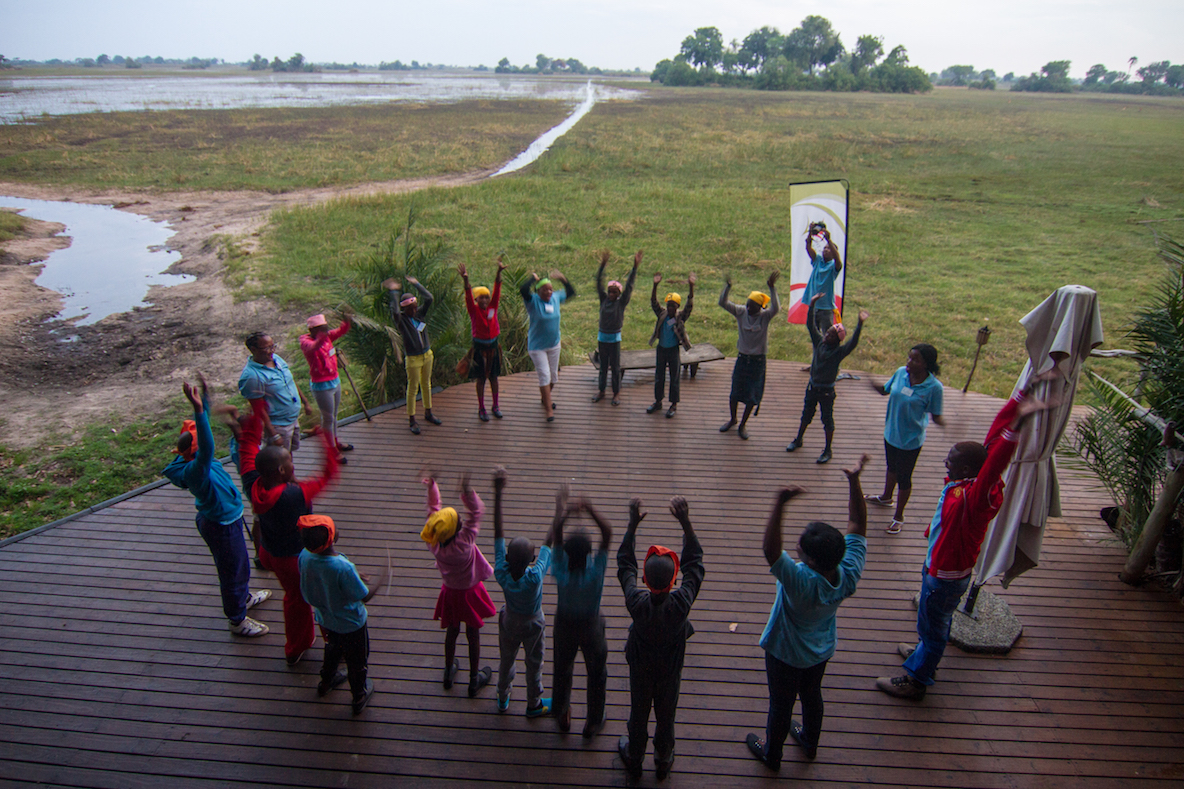
Photo by Sutart Butler
It must be an expensive job. Who pays for it all?
Yes, reintroducing rhinos is a very complicated, very time-consuming, and very expensive operation. And that’s one of the benefits of the kind of high-end tourism we do here in Botswana. When I want to raise money, I go and do talks at high-end tourist camps where I’m introduced to wealthy clients who in turn put me in touch with people in charge of foundations who can pay for this kind of thing. Wilderness Safaris is actually a conservation company that does tourism, and projects like this are only possible if you do high-end tourism. If you do mass tourism and are charging medium dollar, then you simply won’t have the money left to do conservation. We regularly get clients and foundations to donate $10,000. You can’t get that with any other level of tourism. What we have here at the moment [in northern Botswana] is like an Ark. We’re bringing these rhinos and other animals to safety, bringing them to higher ground. I wouldn’t be doing what I’m doing if I didn’t believe that rhinos had a glowing future in this country. I think that by 2025, northern Botswana will be one of the most important range states for rhinos in Africa. And that’s high-end tourism that has helped pay for that. But even so, to make it really work, we still need major international help on a government-to-government level.
How many rhinos have been reintroduced, and what’s the current population number?
Well, to be honest, for security reasons, I don’t want to give an exact figure as to how many rhinos we now have in Botswana. But what I can say is that we have a decent founding population. It’s not many animals, but it’s enough that they can find each other, and we can have a reasonable genetic diversity.
What do you do about security?
When we started the project, rhino populations were stable in other parts of Africa and little did we know that by 2008 another poaching epidemic would be wiping out rhinos across Africa. This has made this project even more important. So far the security we have here has prevented much poaching. We know we’ve lost one rhino to poachers, but I think that’s it. However, without a doubt the poachers will come. I just hope we’re ready for them. We have helicopter patrols and military patrols and I, and the government, have informers on the ground and in the villages.
Why does poaching persist?
Poverty. People on the outskirts of these protected areas aren’t really interested in rhinos. They’re interested in meat so they can eat. But the trafficker from Asia comes and offers that villager up to $10,000 for a rhino horn. That’s his entire village income for five years. That’s taking advantage of poverty. If he wasn’t poor, then he probably wouldn’t take the risk to poach a rhino or elephant. We do have a shoot-to-kill policy for poachers, but it’s not something we really try and do, because, I think, it shouldn’t necessarily be the one who pulls the trigger who’s called a poacher. He’s just trying to survive. It’s the middle man who facilitates it all who is the poacher.
*
As Ives finished speaking, the elephant lumbered past the front of the camp toward where we sat. It came so close that I could hear its breathing. It seemed to stare with some curiosity at us both and, as if deciding that Ives was a friend, waved the end of its trunk around and then plodded off down toward the water’s edge. I exhaled in relief, but Ives seemed positively exhilarated.
“Ahh, this is the most beautiful place on Earth,” he said. “When I first saw the delta about 35 years ago, I thought ‘This is it. I’m not going any further.’ Now they’ll have to bury me in the clay here. I’m not going anywhere. I just hope I can leave this place in a better way than when I arrived. That’s what I want to do with these rhinos, with this Ark. Because if we can’t save the rhinos, then what can we save?”
 The Magazine of The Sierra Club
The Magazine of The Sierra Club

